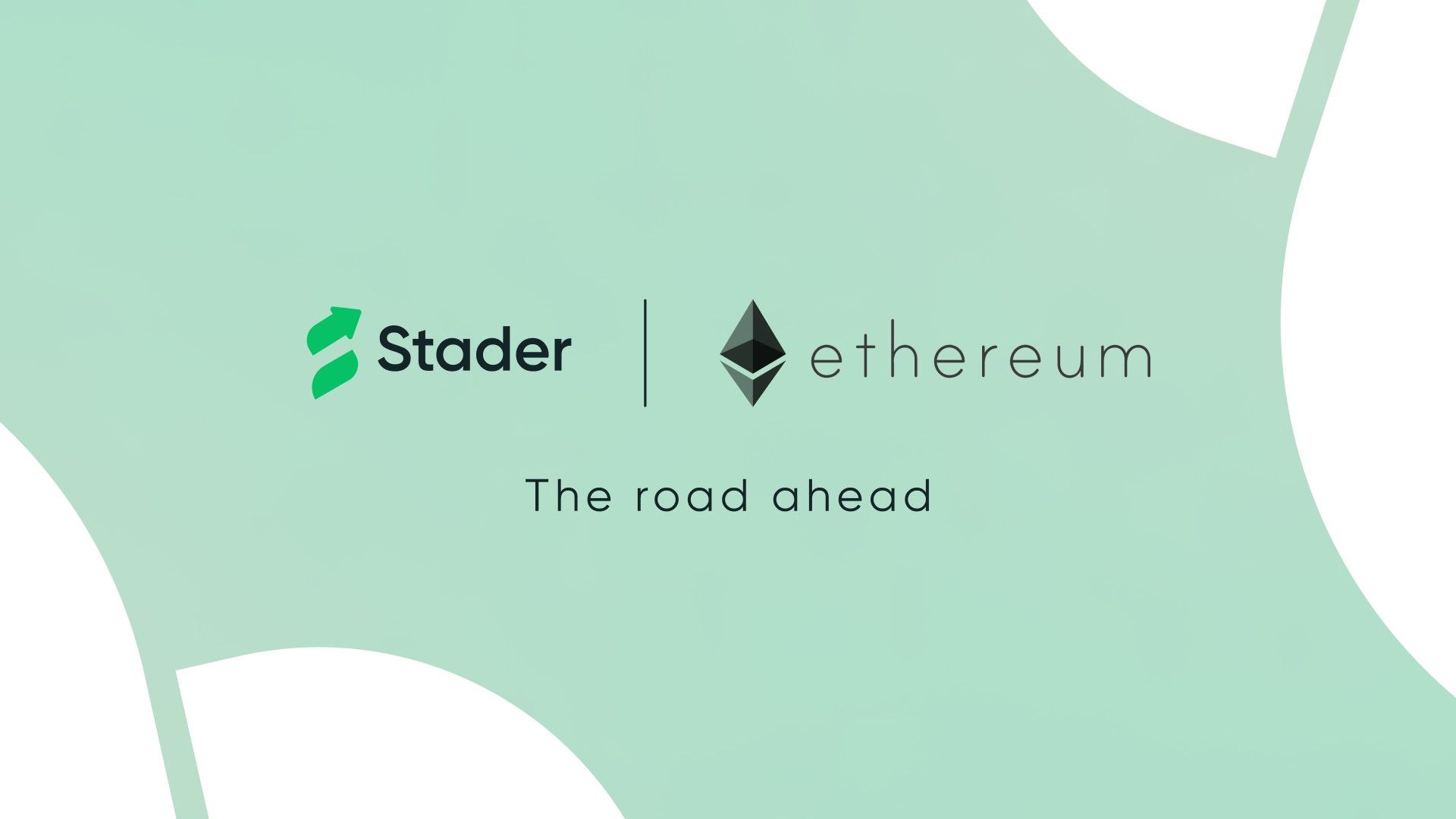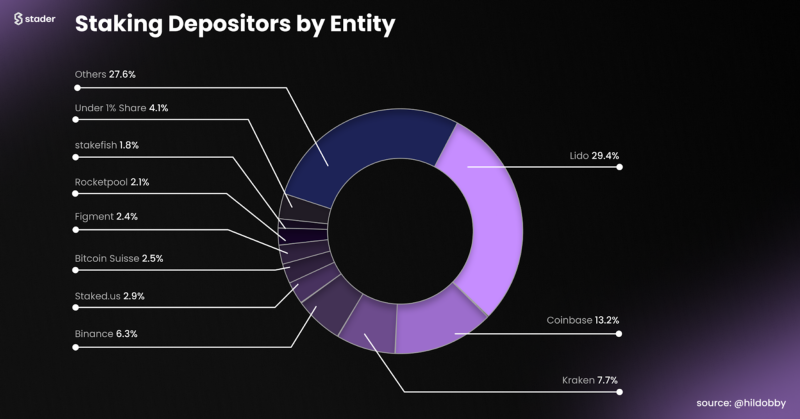Stader x Ethereum: Our Vision
We are elated to be building a liquid staked solution for Ethereum and increasing the diversity of choices available to the community. In…

We are elated to be building a liquid staked solution for Ethereum and increasing the diversity of choices available to the community. In today’s post, we wanted to share our vision for this product and the plan to bring this vision to life. We would love to hear from the community to refine this and make this our shared vision.
But before we dive in, it’s important to share an introduction to Stader and also the state of Ethereum staking today, both of which provide context for why we are pursuing this vision.
Introduction to Stader
We are a multi-chain, non-custodial staking infrastructure protocol, currently live with liquid staking on six chains including Polygon (which is on a mission to help scale Eth), BNB, Near, Fantom, Hedera and Terra 2.0. We have ~120 mn $ in TVL across chains and have over 25k+ unique wallets staked with us. We are also supported by a 150k+ member strong community across chains.
State of Ethereum staking
Liquid staking has emerged as the preferred way for the community to stake on Ethereum with ~33%+ of all staked ETH flowing through liquid staking protocols. This is closely followed by centralized exchanges (~29% of all staked ETH) as the next preferred option.
And within the liquid staking ecosystem, there’s a single protocol, Lido, that has a dominant market share of ~90%. This is not ideal for the ecosystem and is only made worse by the fact that only a small permissioned set are allowed to operate nodes for Lido.
And, across Lido and the top 2 exchanges in Coinbase & Kraken, over 50% of all staked Eth flows through just these 3 entities. This clearly highlights the need for more robust alternatives.

Rocketpool has led the way on furthering decentralization with permissionless node operators but the capital efficiency challenges that came from the 16 ETH bonding requirement meant that they can and have run into scaling issues.
Liquid staking protocols, outside of Lido, have also had limited Defi integrations in the past that have reduced their utility/attractiveness to some users but we are glad to see that this is beginning to change slowly.
Stader’s vision for Ethereum
Stader’s vision on Ethereum is to deliver a liquid staking product that can find the right balance of being user backward (think great UX, staking yield, Defi integrations), scalable (can support user demand) and a force for decentralization.
If we were to transport you into a future where our vision comes true, here’s what you would see:
Stader’s ETHx is largely supported by permissionless node operators run by home stakers/independent operators. Permissionless node operations have truly scaled thanks to low bonding requirements, enabled by distributed validator technology (DVT) significantly reducing the risk of penalties/slashing. Our liquid token is widely used across the ETH Defi ecosystem and is considered a replacement for ETH itself, enabling more ETH to be staked and help secure the network
Our design choices for ETHx, to be released shortly, will clearly reflect our commitment to this vision. Meanwhile, here’s a sneak peek into what you can expect when we launch:
- Hybrid model of permissioned and permissionless operators: Permissionless operators will have a bonding requirement while whitelisted, permissioned players will have low/no bonding requirement.
- Such a design enables us to enable permissionless node operators from day 1 and help work with the community to make this mainstream and scale to support 10s of billions of dollars in a decentralized manner
- We will be able to cater to user demand, which could potentially exceed the capacity for our permissionless node operator set, without limits thanks to our permissioned node operators
- Lower bonding requirements for permissionless node operators:
- Eth staking has been set up very thoughtfully to be non-punitive to any non-malicious performance issues and this hasn’t fully reflected yet in the typical bonding requirements required of permissionless node operators. When we combine this with the emerging DVT technologies that can significantly lower the risk of slashing and penalties, we would be able to improve capital efficiencies and attract more permissionless node operators
- We are already in testnet with SSV Network and will be working with them and other DVT players to leverage this when it launches in 2023
- Full-blown Defi: Strong Defi integrations have been a part of our liquid staking solutions across chains and we will be bringing that experience to work closely with Defi protocols on Eth to make sure ETHx can be a fantastic lego block for ETH Defi and bring alive the full power of liquid staking with Staking + Defi yield for users.
- Top Defi partnerships currently live on other chains for Stader liquid tokens include: AAVE, Balancer, QiDAO, Beefy finance, Quickswap and more on Polygon; Venus, Apeswap on BNB; Beethoven X (Friendly Balancer fork), Granary finance (Lending/borrowing on FTM) and many more!
We will be sharing a whitepaper that goes into the detailed design of our solution in the coming weeks. Meanwhile, we look forward to feedback from the community on our vision and design choices shared above to truly mold a strong vision, for what ETH staking could be, together.
To stay up to date with what we are building and share your feedback with us, please do interact with us on these channels: Twitter | Telegram
You can also sign up here to join our mailing list and be the first to know all the alpha about our upcoming launch.